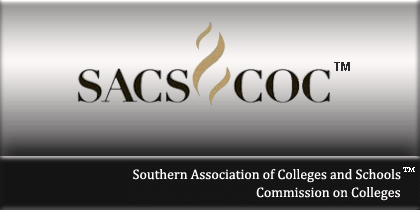Contact NFC
Director of Institutional Research
and Assessment
Phone: (850) 973-1665
Email: maysd@nfc.edu
Office: Bldg 6, Rm 222
Substantive Change Procedure
Procedure to implement BOT Policies 1.10 and 2.59
North Florida College’s Substantive Change Procedure has been created to ensure all substantive changes are reported correctly and timely to its accrediting bodies. These procedures are designed to serve as a guide to person(s) modifying/adding courses, programs, degrees, at North Florida College.
A substantive change is a significant modification or expansion of the nature and scope of an accredited institution. Typically substantive changes include:
- Any change in the established mission or objectives of the institution
- Any change in legal status, form of control, or ownership of the institution
- The addition of courses or programs that represent a significant departure, either in content or method of delivery, from those that were offered when the institution was last evaluated
- The addition of courses or programs of study at a degree or credential level different from that which is included in the institution’s current accreditation or reaffirmation.
- A change from clock hours to credit hours
- A substantial increase in the number of clock or credit hours awarded for successful completion of a program
- The establishment of an additional location geographically apart from the main campus at which the institution offers at least 50% of an educational program.
- The establishment of a branch campus
- Closing a program, off-campus site, branch campus or institution
- Entering into a collaborative academic arrangement that includes only the initiation of a dual or joint academic program with another institution
- Acquiring another institution or a program or location of another institution
- Adding a permanent location at a site where the institution is conducting a teach-out program for a closed institution
- Entering into a contract by which an entity not eligible for Title IV funding offers 25% or more of one or more of the accredited institution’s programs
For specific SACSCOC procedures to address substantive change, see the Substantive Change Policies and Procedures at https://sacscoc.org/accrediting-standards/substantive-changes/
For substantive changes to nationally accredited programs such as the BSN, ASRN, and Paramedic programs, each accrediting agency (ACEN, CAAHEP) may have their own standards and procedures in addition to those of the regional accrediting agency, SACSCOC. Please refer to those policies, linked below:
Accreditation Commission for Education in Nursing (ACEN)
https://resources.acenursing.org/space/AP/1824260104/Policies (Policy #14)
Commission on Accreditation of Allied Health Education Programs (CAAHEP)
Committee on Accreditation for the EMS Professions (COAEMSP)
“The Commission on Accreditation of Allied Health Education Programs (CAAHEP) is a programmatic post-secondary accrediting organization recognized by the Council for Higher Education Accreditation (CHEA). CAAHEP is the only nationally recognized accreditor for EMS education, and CoAEMSP is the only organization recognized by CAAHEP to provide accreditation services for Paramedic and, beginning in 2025, AEMT education programs.”
https://coaemsp.org/caahep-standards-and-guidelines ( CAAHEP Standards and Guidelines 2023, page 13)
Some questions to consider as you analyze whether changes constitute a significant departure from what NFCC currently offers include the following:
- What other related programs are already in place?
- Does the new program require:
- additional faculty;
- new courses;
- additional library or other learning resources;
- new equipment or facilities;<
- a different resource base?
Substantive Change Actions
The following actions are specific to SACSCOC requirement, please refer to specific requirements for ACEN and CAAHEP for the BSN, RN, and Paramedic programs.
NO ACTION
Some changes do not need to be reported to SACSCOC. These include the following:
- Initiating a certificate program at an employer’s request and on short notice using existing approved courses and location.
- Initiating other certificate programs using existing approved courses and location.
- Initiating off-campus sites (including Early College High School and dual enrollment programs offered at the high school) that amount to 24% or less of the coursework needed to complete a degree, certificate or diploma.
- Initiating distance learning that amount to 24% or less of the coursework needed to complete a degree, certificate, or diploma.
- Expanding program offerings at previously approved off-campus sites, adding approved programs that ARE NOT significantly different from current programs at the site.
- Expanding program offerings at previously approved off-campus sites, adding programs that ARE significantly different from current programs at the site, BUT NOT at the institution.
- Initiating distance learning by offering 24% or less of any program for the first time
NOTIFICATION
Other changes simply require that SACSCOC be notified in advance of the implementation of the change. The letter of notification should a completed Substantive Change Cover Sheet, description of the planned change, intended implementation date, intended date of SACSCOC review.
PROSPECTUS AND PRIOR APPROVAL
Larger scale changes require written notification at least 6 months (in some cases, 12 months) in advance and approval of a prospectus, which must be submitted prior to the SACSCOC deadline.
SITE VISITS
Certain types of substantive changes, such as change in governance, level change, mergers, change in ownership or control, and addition of off-campus instructional sites require a site to determine continued compliance with the Principles of Accreditation: Foundations for Quality Enhancement. When a committee visit has been authorized by the President of the Commission, the institution will be asked to provide documentation of the impact of the change on selected requirements in the Principles of Accreditation.”
SUBSTANTIVE CHANGE EXAMPLES
The examples in the chart are the substantive changes most likely to be of consideration for North Florida College and are taken directly from the SACSCOC policies. Information on additional types of changes and required timelines can be found on the SACSCOC website or by contacting the SACSCOC Accreditation Liaison of the College. For specific requirements related to the BSN, RN, and Paramedic programs, see also ACEN and CAAHEP substantive change policies.
Type of Change | Requires Notification | Requires Prior Approval | Requires Visit |
INSTITUTIONAL CHANGES | |||
Change Measure Progress to Completion |
| Yes |
|
Distance Ed-Institutional-level Approval |
| Yes |
|
Governance Change | Yes | Yes | Yes |
Institutional Contingency Teach-out |
| Yes |
|
Level Change |
| Yes | Yes |
Merger / Consolidation | Yes | Yes | Yes |
Mission Change |
| Yes |
|
Ownership, Means of Control, or Legal Status Change | Yes | Yes | Yes |
PROGRAM CHANGES | |||
Clock-Credit Hour Conversion |
| Yes |
|
Method of Delivery | Yes |
|
|
New Program (50-100% new content) |
| Yes |
|
New Program (25-49% new content) | Yes |
|
|
Program Closure |
| Yes |
|
Program Designed for Prior Learning | Yes |
|
|
Program Length Change |
| Yes |
|
Program Re-open | Yes |
|
|
OFF-CAMPUS INSTRUCTIONAL SITE (OCIS) | |||
OCIS (25-9% instruction delivered at site) | Yes |
|
|
OCIS (50% or more instruction delivered at site) |
| Yes | Contingent |
OCIS Relocation - Non-Branch | Yes |
|
|
OCIS Relocation - Branch |
| Yes |
|
OCIS Name or Address Change | Yes |
|
|
OCIS Closure |
| Yes |
|
OCIS Re-open | Yes |
|
|
Timelines
In order to comply with SACSCOC policy on substantive change, North Florida College recognizes the timeline necessary in the reporting process.
Substantive changes requiring approval by SACSCOC full Board of Trustees
March 15 for review in June
September 1 for review in December
Substantive changes requiring approval of SACSCOC Executive Council
January 1 for changes implemented July 1 – December 31 in same year
July 1 for changes implemented January 1 – June 30 of subsequent year
Offices contemplating significant changes for North Florida College should immediately contact the Accreditation Liaison to determine if the change fits the definition of a substantive change as required by SACSCOC. The Accreditation Liaison will work with SACSCOC representatives to ensure that the correct procedures are followed.
All substantive change activity will be documented in North Florida College’s Accreditation Liaison office.
Accreditation Liaison
According to SACSCOC policies, “it is expected that the … designated representative of an institution will notify the Commission President of substantive changes at that institution. Every institution has an Accreditation Liaison whose charge is to ensure compliance with accreditation requirements. The Accreditation Liaison should take the time to become familiar with the Commissions policies and procedures, ensure that substantive changes are recognized and reported in a timely fashion, and consult with the institution’s COC staff member about any questions.”
North Florida College
Kristin Summers
Associate Dean of Academic Affairs
850-973-1630
SACSCOC Representatives
Commission on Colleges
Dr. Belle Wheelan, President
404.679.4512
bwheelan@sacscoc.org
Commission on Colleges
Dr. Geoffrey Klein, Vice President
404.594-6608
gklein@sacscoc.org
Commission on Colleges
Dr. Kevin Sightler, Director of Substantive Change
404.679.4501 ext. 4589
ksightler@sacscoc.org
References
Accreditation Commission for Education in Nursing. (6 March 2024). ACEN Policies. Web. https://resources.acenursing.org/space/AP/1824260104/Policies
Commission on Accreditation of Allied Health Education Programs. (2023). CAAHEP Standards & Guidelines 2023. Web. https://coaemsp.org/caahep-standards-and-guidelines
Sightler, Ph. D. Kevin. “Recognizing and Responding to Substantive Change.” SACSCOC Substantive Change Workshop. Tallahassee College, Tallahassee, FL. 27 March 2015. Presenter.
Southern Association of Colleges and Schools Commission on Colleges. (March 2023). Substantive Change Policies and Procedures. Web. https://sacscoc.org/app/uploads/2019/08/SubstantiveChange.pdf


